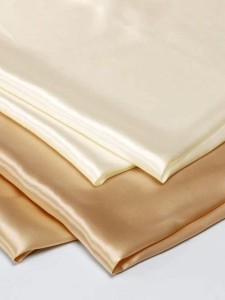Understanding the processes involved in dry cleaning and machine washing
We all wash and dry our clothes regularly, but how often do you stop to consider the processes involved? Are you one of those people that read the care instructions thoroughly before cleaning, or do you throw everything in one wash and hope for the best? Here we look the different methods of washing and cleaning your clothes, as well as its fascinating history.
Caring for your clothes and your skin
You may be surprised to discover the amount of chemicals and solvents involved in cleaning fabrics. Thankfully for the majority of us these are quite harmless. However, not everyone can tolerate dry cleaning fluids or washing powders, particularly those who are chemically sensitive, allergic or suffer from asthma.
The dry cleaning process
 Dry cleaning is a process that uses a chemical fluid instead of water. It uses a liquid, known as ‘tetrachloride’ or ‘perchloroethylene’, which lifts dirt from the fabric. Garments are soaked and cleaned in the solvents, which are then extracted to be used again, and the clothes are then steamed dry. Some doctors and studies have suggested that perchloroethelyene can be linked to various respiratory diseases. Another reason you might be wary is that some dry cleaners use solutions such as bleach and detergents, which can cause an allergic reactions.
Dry cleaning is a process that uses a chemical fluid instead of water. It uses a liquid, known as ‘tetrachloride’ or ‘perchloroethylene’, which lifts dirt from the fabric. Garments are soaked and cleaned in the solvents, which are then extracted to be used again, and the clothes are then steamed dry. Some doctors and studies have suggested that perchloroethelyene can be linked to various respiratory diseases. Another reason you might be wary is that some dry cleaners use solutions such as bleach and detergents, which can cause an allergic reactions.
The history of dry cleaning
Professional dry cleaning started in France and has existed for more than a century and a half. In the 1800s, Jean Baptiste Jolly made an accidental discovery when he spilled some kerosene on the tablecloth, and the tablecloth became cleaner. The first cleansing solvents commonly used used were turpentine and kerosene. However these were highly flammable, and by the 1930s such substances were substituted by other, safer solvents. The most common dry cleaning solution then became perochloroethylene, it was as good at removing dirt as the kerosene based fluids, with the added benefits of being not being flammable or smelling as strongly as the petroleum based products, it’s widely used and is sometimes called ‘dry-cleaning fluid.
After care instructions
Dry cleaning residues can stay on the fabric fibres even when the dry cleaned garment is brought home. If you have sensitive skin or are concerned about the solvents involved, follow these tips to be on the safe side:
- Take clothes out from their plastic cover and hang them outdoors as soon as you can, airing until the odour fades
- Dispose the bag in which the clothes comes packed in
- Wash your hands after being in contact freshly dry cleaned clothes
 Machine washing
Machine washing
There is a big difference between washing your clothes in the washing machine and having them dry cleaned. Machine washing depends entirely on water, soap or an alkali. The role of the alkali is to dissolve all the oils and remove dirt. Most of the time, the soapy agent retains dirt as it becomes loose during the washing cycle, and it is then washed away.
Detergents, allergies and sensitive skin
We need detergent in order to wash our clothes. Unfortunately some of us can be allergic to washing powders, fluids or softeners. The most common symptom of a detergent allergy is a rash. But there can also be other symptoms such as sneezing, watery eyes or tightness in your skin.
Thankfully, there are now many special hypoallergenic detergents available that do not cause allergies. These are free from perfumes and the dyes that can often cause allergies and sometimes have a neutral PH level – which can be kinder to sensitive skin. There are many types available, so always check the label carefully, in order to get the right one for you, and indeed right for the item you are cleaning.
If you find that soap remains on your clothes after going through the washing machine, try running the machine empty on a high temperature cycle, adding some baking soda to the detergent container and putting a little vinegar in the drum. This cleans out your washing machine.
Tips for sensitive skin suffers:
- Make sure you only use little detergent when you wash your clothes
- Rinse your clothes very well before taking them out of the machine for drying.
- Vinegar or baking soda helps remove and excess of detergent left over. Add one or the other when you rinse your clothes.
 And it’s not just sensitive skins that can benefit from this kind of advice. Delicate fabrics such as silk really need to be cleaned with care, and it is definitely not a fan of harsh detergents or hot washes. To learn more about how to keep your silks looking their best read our Caring for Silk Clothing blog. And if you want to more advice on removing stains from silk without using irritating products, read our information on removing stains and smells from silk clothing.
And it’s not just sensitive skins that can benefit from this kind of advice. Delicate fabrics such as silk really need to be cleaned with care, and it is definitely not a fan of harsh detergents or hot washes. To learn more about how to keep your silks looking their best read our Caring for Silk Clothing blog. And if you want to more advice on removing stains from silk without using irritating products, read our information on removing stains and smells from silk clothing.
Playing it safe
For those with allergies and sensitive skins, if you do dry clean your clothes try to do so sparingly (?) and make sure that you take your items out of its plastic cover and let them air. Most of our natural silk range is washing machine friendly. When you wash your clothes at home, make sure you know what is in the powders or softeners you are using.
Unfortunately, chemicals are becoming a part of everyday life, and are quite an integral part of cleaning fabrics. But there are ways to avoid them, and in doing so you’ll protect your skin and your delicate clothing.

